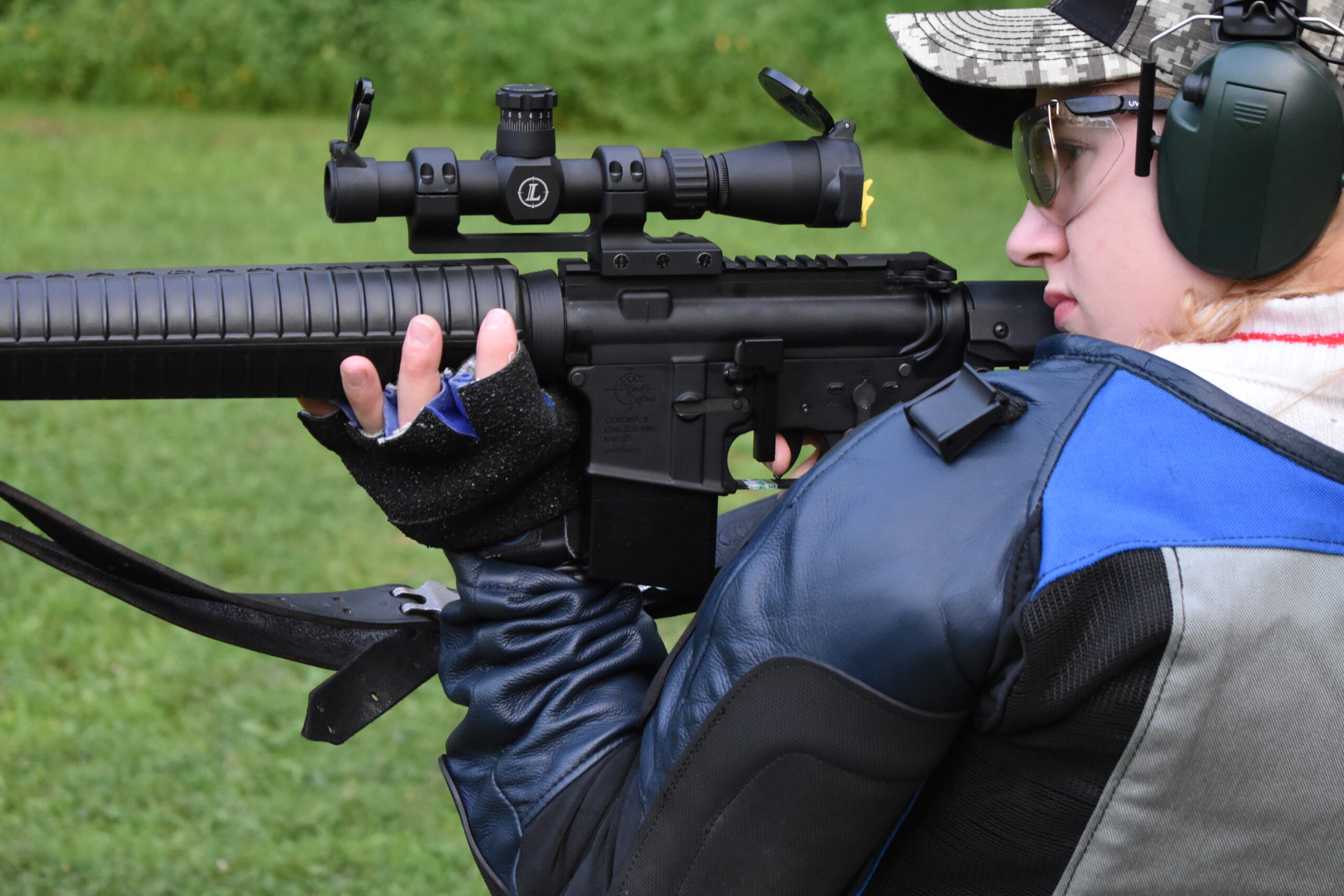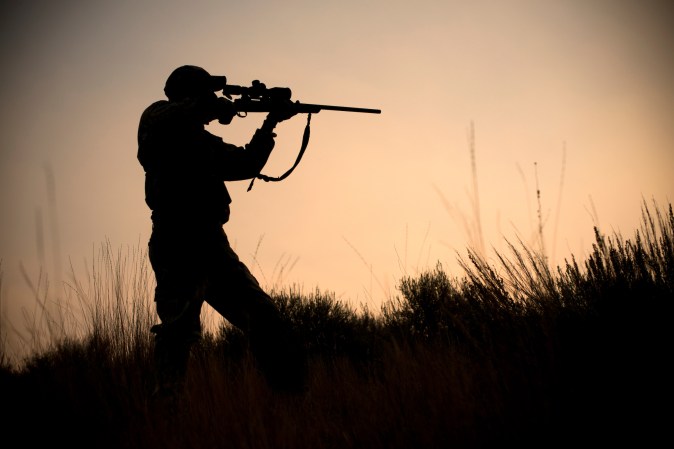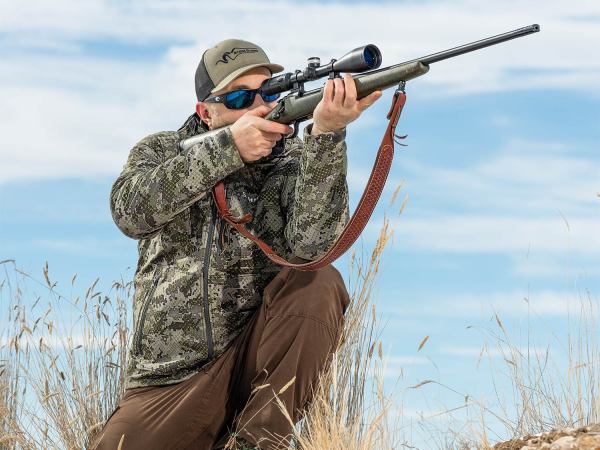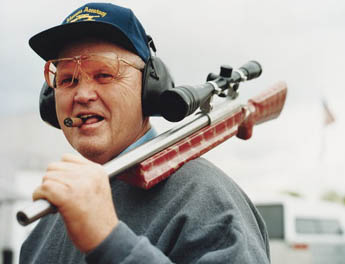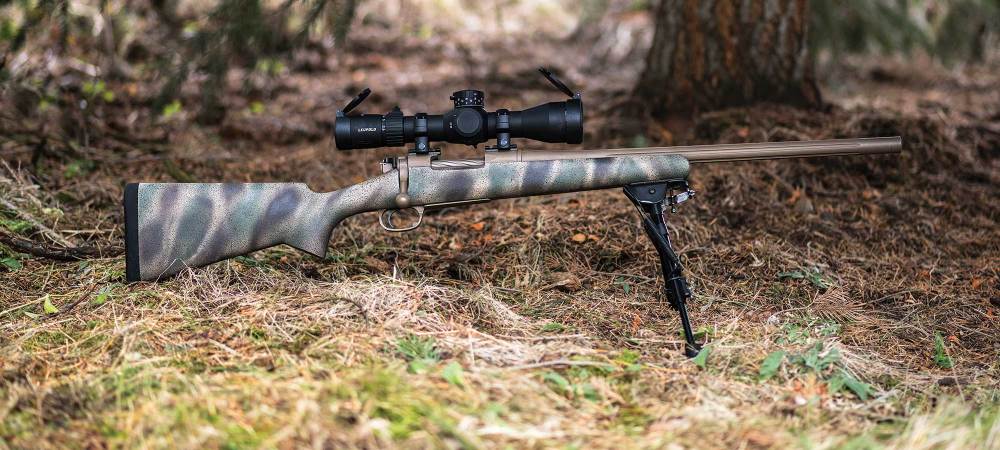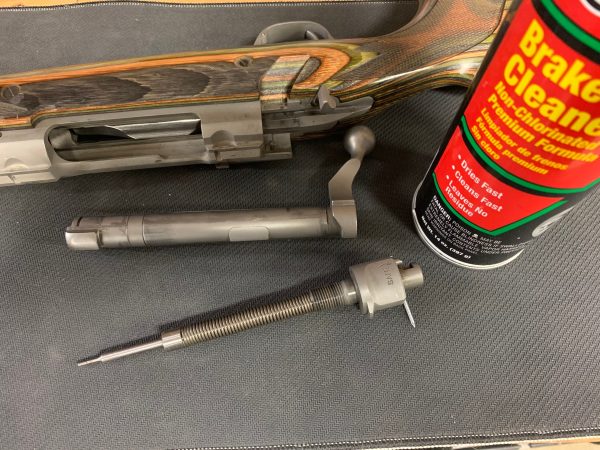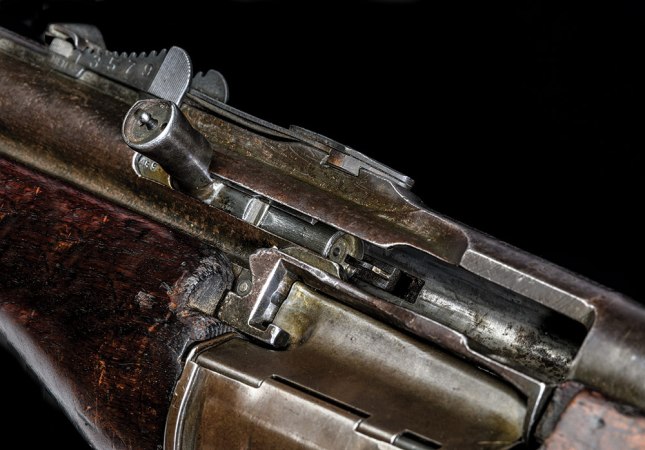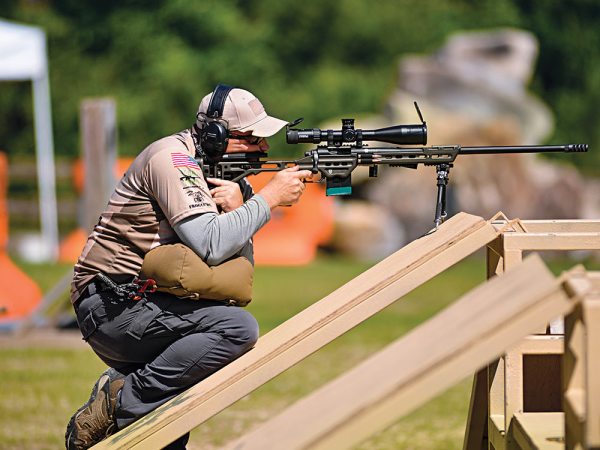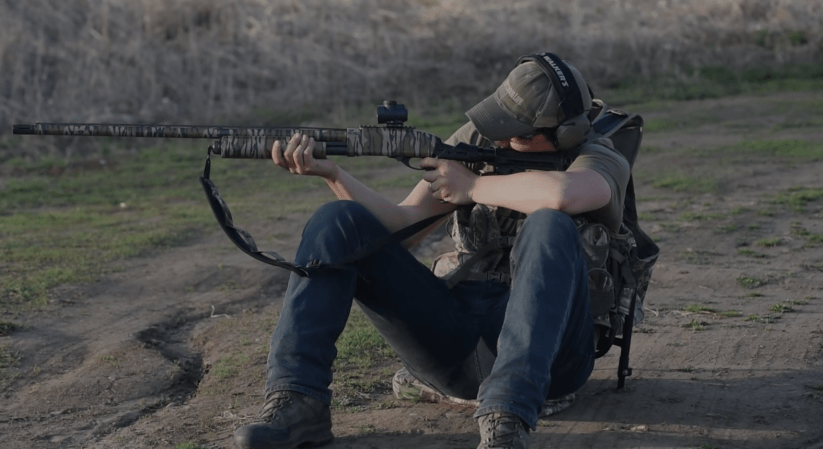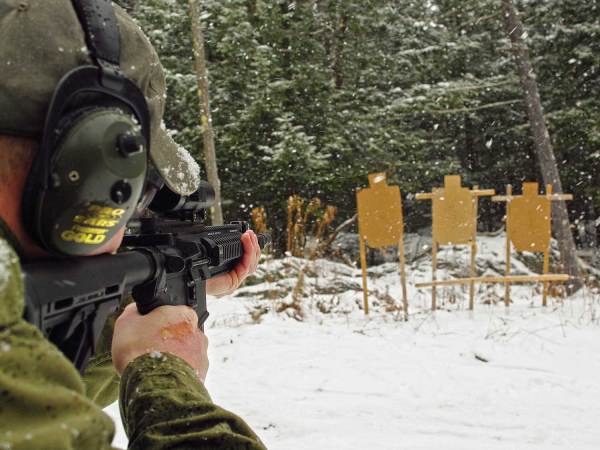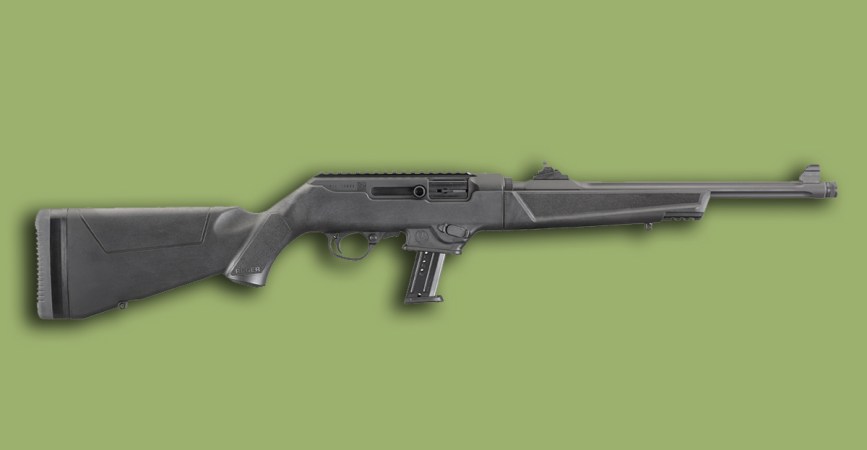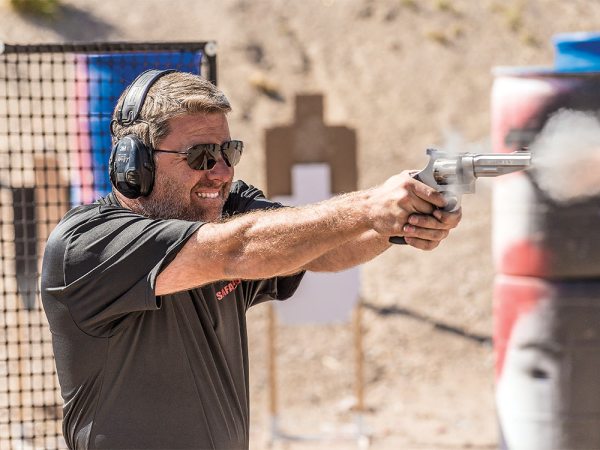We may earn revenue from the products available on this page and participate in affiliate programs. Learn More ›
Over the years, I’ve fine-tuned the equipment I use in high power service rifle competition. Whether you are looking to get started in the sport or have already purchased some gear that isn’t quite meeting your needs, this guide will help you get your kit on track. The Civilian Marksmanship Program and the National Rifle Association are the two governing bodies of the high power service rifle discipline and they have lists of the specifications that equipment must meet.
Rifle
While some participants still use M1 Garand’s or M1A’s, the primary service rifle in use is the AR-15. Competitors can upgrade various parts of their rifle while staying within specifications. A few years ago, adjustable butt-stocks were legalized for competition. I use the Magpul Generation 1 UBR stock, and remove the rear pad. I found that the rough edges of the polymer beneath the pad hold better for me. This stock is sturdy and does not jostle like other adjustable stocks. It has a seven-position length of pull adjustment, each marked with numbers for a quick and easy return to the desired setting. Compartments on the stock allow competitors to add extra weight. I found the sling quick-detach system cumbersome, opting instead for Stealth Ballistics’ traditional sling mount.
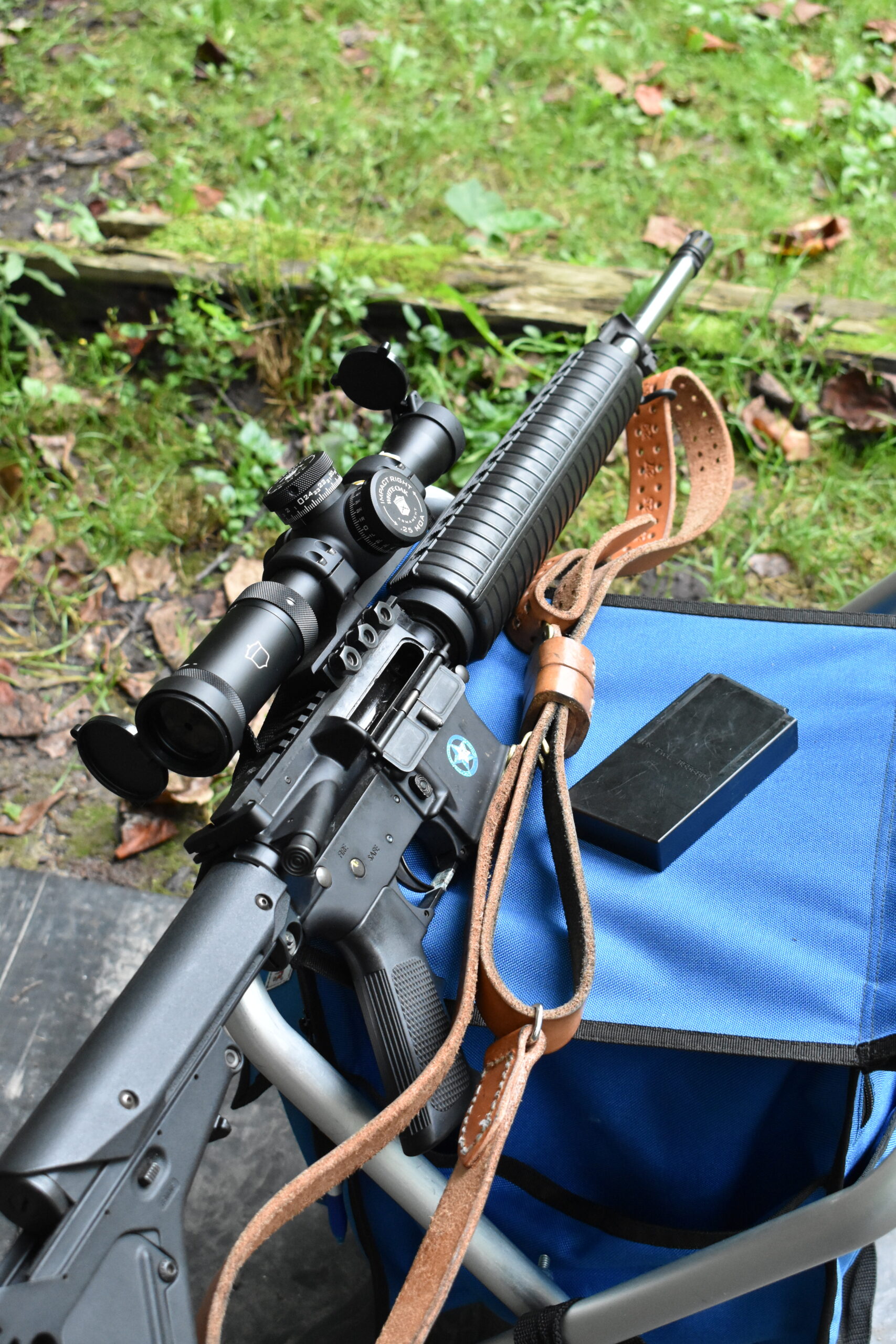
Optic
As of 2016 competitors are now permitted to use 4.5X optics, a rule update that significantly changed high power. While some argue that it has devalued the game and made it “easier” compared to the iron sight days, I contend that it has evened the field, giving competitors with eyesight issues a chance to compete and reach their full potential. Over the past five years, a variety of optics have hit the scene. I competed with one of the first on the market, a White Oak Leupold Mark AR Scope that was both economical and performed well. Last year, White Oak Armament released a new service rifle scope, priced well for its offerings and designed specifically for the service rifle competitor. Previous scope offerings almost always fell short in one or more areas.
The WOA Distinguished Rifleman scope features 1-4.5 variable power in a 30mm tube. The back of the eyepiece allows for focus adjustment, while a side knob features click adjustable parallax from 10 yards to infinity, though it spins below the 10-yard mark. This is extremely important for those who use electronic training systems like SCATT, as it allows them to focus on scaled-down targets at reduced distances. A simple circle with a 7.5 MOA diameter ring around a .75 MOA illuminated dot combines a precise aiming point with the look of an iron site aperture for a unique reticle. Cant indicator lines fill the right and left edges of the field of view, each etched 10 degrees apart with the purpose of allowing those who shoot with a cant to remain consistent between shots. Some are concerned that the lines will be too distracting. I found that if you are focusing on the reticle (dot or circle) as you are supposed to, the cant lines blur. I don’t even notice them.
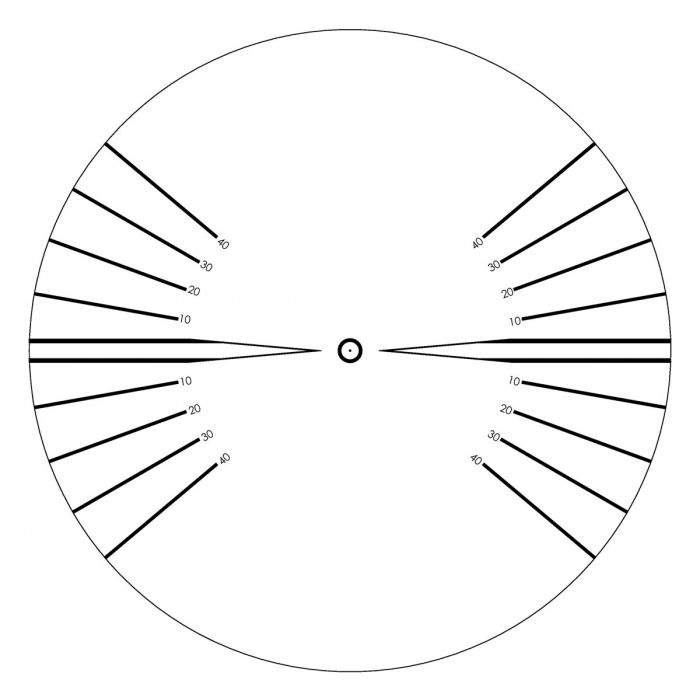
Accessories
Two accessories I cannot imagine shooting without are the Original Bob Sled and extended bolt release. Though not essential, I have come to rely on these items. The OBS service rifle sled is the same size as a 20-round magazine, but is machined from Delrin and is for single-loading only. The loading channel perfectly aligns the round to enter the chamber and weighing in at 13 ounces, is heavier than an empty steel magazine. I especially like this extra weight for offhand and the loading channel for prone. I do not have to break position or worry about rounds getting smashed because they are not properly aligned.
Use of an extended bolt release, especially with the popularity of optics, has soared. Many default to the Magpul BAD Lever, but I much prefer the lesser-known trigger guard bolt release, made by the Original Bob Sled. It takes a conscious movement to activate the lever, so it is extremely hard to activate by mistake. This serves as an extra safety feature. It also allows you to close the bolt when in position rather breaking position with each shot. The biggest advantage I see to this lever over Magpul’s offering is that it stays outside the trigger guard. It is still easy to reach and activate, but without the extra worry of accidentally hitting it or it getting in the way.
Coat
A quality shooting coat is essential. It’s an investment for adults, though less expensive shooting coats may be better options for growing kids. If you maintain your weight and take care of your equipment, your coat should last years. The premier high power coat is the Creedmoor Hardback. Creedmoor has taken steps in recent years to fit coats to shooters with different dimensions, making a huge difference for female competitive shooters. This coat provides stability during offhand stages and tightens up all positions. Relevant upgrades are zippers, side ventilation, and shoulder straps. I recommend all of these. Zippers allow for a more comfortable seated position and shoulder straps allow you to prevent the shoulder fabric from bunching up and altering the location of the rifle in your shoulder. Over time you may find that you need small adjustments to your coat, like cutting back the neck. A local leather smith can make small adjustments.
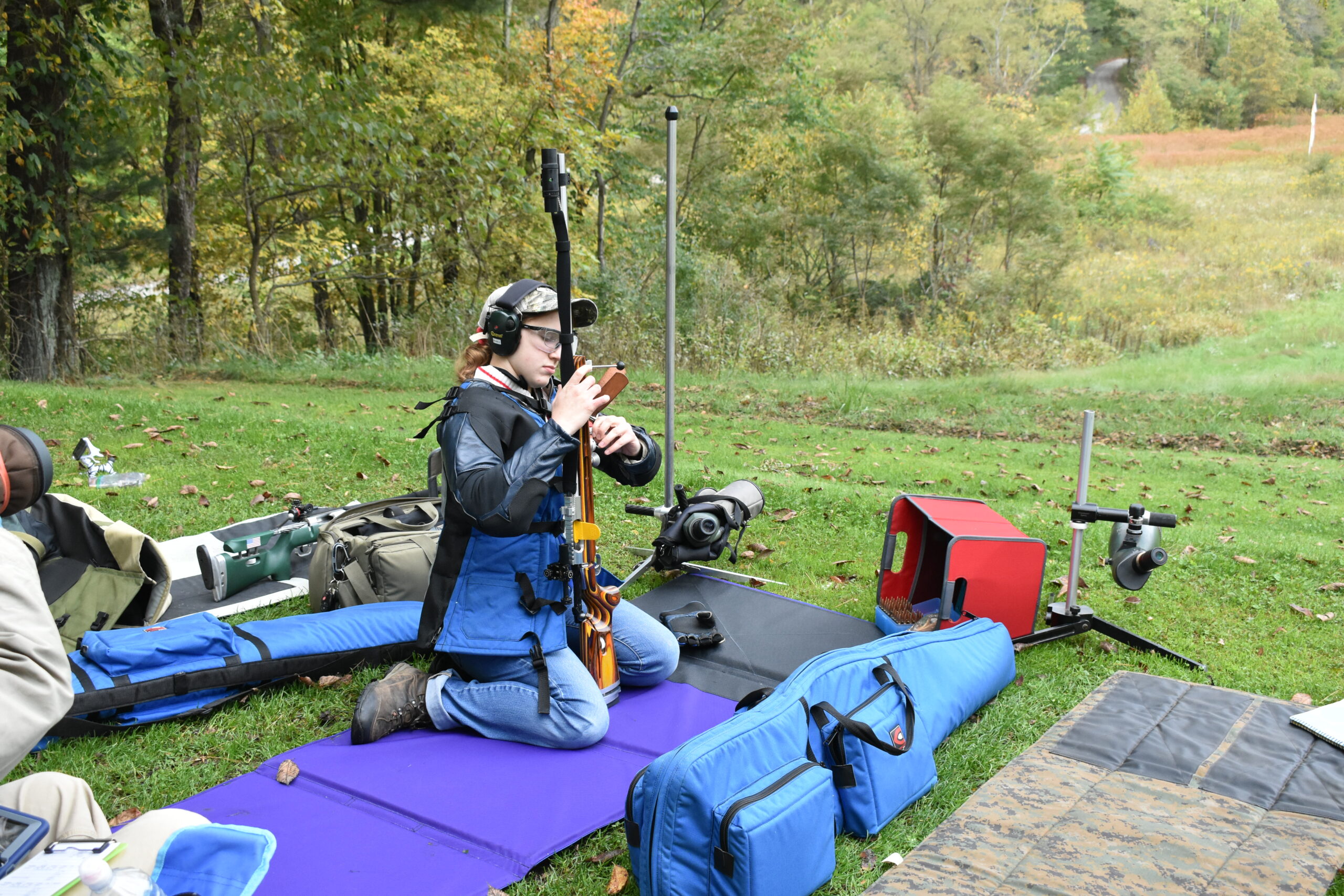
Mat
What type of shooting you are doing determines the type of mat you should have. There are dozens of styles available, but not all are created equal. Stay away from especially thin mats. Some shooters prefer mats with rubber that literally sticks to you, but I like material that keeps your elbows locked in place without melting off the mat. Material that comes off or “melts” in the sun presents another issue as it alters the surface of the mat, making your position less repeatable. For .223 service rifle, I like the Creedmoor roll-up shooting mat. It is quick to deploy and easy to transport. It is thick enough to provide support but thin enough to be folded over for the seated position while adhering to match rules. (This keeps mud from your shoes off your mat.) For long range and larger calibers, I prefer the Creedmoor quad-fold shooting mat. It does not bunch underneath me while I shoot and allows for a repeatable position.
Gloves
There is not a one-size fits all glove. Trying multiple styles will make it easier to determine what works for you. You will likely need a different glove for each type of shooting that you do. (I need a different style glove for high power service rifle, versus long range.) One of my favorites is this fingerless glove from Champion’s Choice.
Slings
Buy a leather sling. Just do it. Cotton web slings are great for learning, but returning to the same setting quickly and reliably between positions is next to impossible with them. The two best service rifle slings are made by Jack Jones and Eric Hollis. Jack Jones slings are hard to find, as you have to locate the man himself to purchase one. Eric Hollis slings are readily available online. These are designed specifically for service rifle competition, handmade, and last if you take care of them. I have had other leather slings in the past that fell apart after a season or two.
Read Next: This Rifle Training Program Will Make You a Better Shooter in 200 Rounds
Scope Stands
Even with the rise of electronic targets, spotting scopes are still widely used for both score-keeping and wind-reading. Many people try to cut costs on scope stands. Do not buy a smallbore scope stand for high power. Three-piece collapsible stands are easy to transport but often fall over in the wind and are unwieldy to set up. I use the First Strike Scope Stand but the Creedmoor Polecat is another solid option. Both of these stands are sturdy and designed for the high power shooter. The Polecat allows for more fine-tune adjustments than the First Strike and can vary in height by removing or adding rods. The Polecat still remains stable where other assembly required scope stands do not because of the construction and larger diameter rods.
Cart / Shooting Stool
Once again, Creedmoor Sports takes the lead on these options. While there are many different styles of carts and shooting stools, choose something that will allow you to fit all of the gear you need and that will work with how you set up to shoot. For example, some prefer carts with built in data book holders for easy access during offhand. Others prefer separate items tossed into a wagon at the end of the day. The types of carts are endless. (I once saw one made from an old lawnmower.) What you need will evolve as your skills do. Spend time evaluating your needs and the distances you plan to transport your gear. Bigger wheels are better for navigating longer distances and thick grass.
This list is not all-inclusive but covers basic equipment with recommendations. As a Distinguished Rifleman, these are all products that have worked for me.
